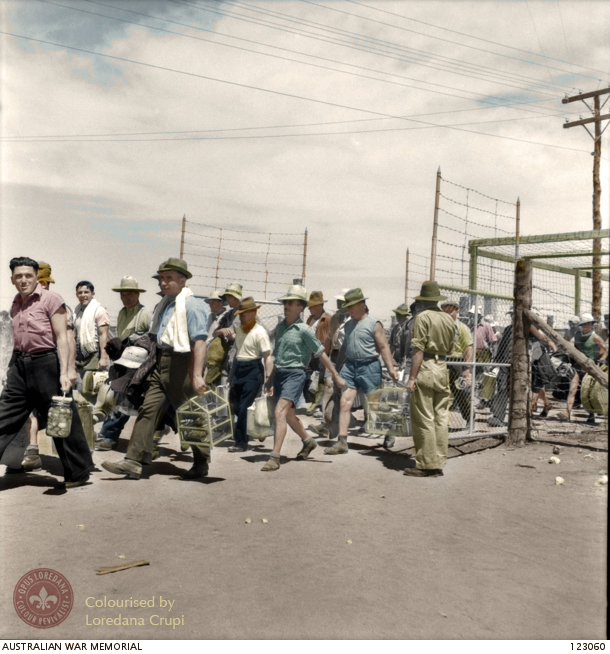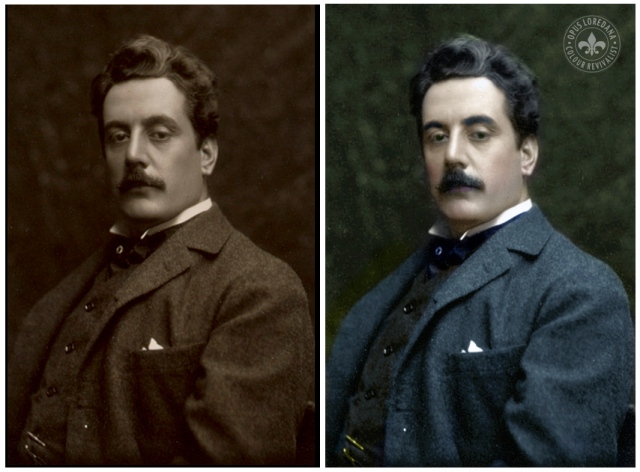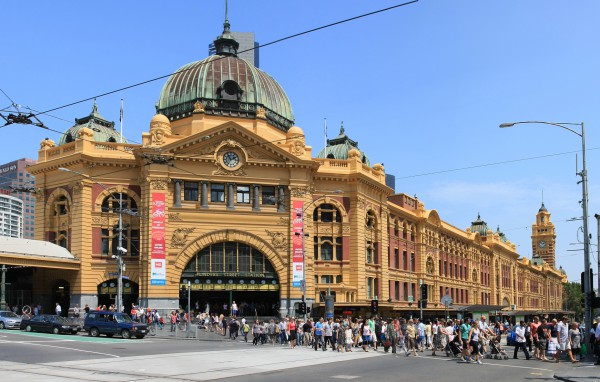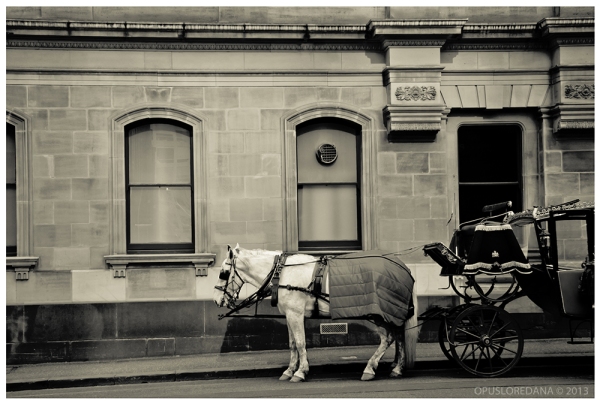During the First and Second World Wars, foreign nationals residing in Australia were classed as “enemy aliens” if they came from countries warring with Australia.
 Photo: H K Cullen ~ Italian internees Loveday Internment Camp 1943 ~ Colourised by Loredana Crupi
Photo: H K Cullen ~ Italian internees Loveday Internment Camp 1943 ~ Colourised by Loredana CrupiSo when Italy declared war on Britain and its allies on 10th June 1940, Italian nationals living and working in Australia became hostages of war. In both World Wars civilians from enemy alien nations were arrested and incarcerated for the duration of the war in barbed wire compounds .
Loveday Camp in South Australia was the largest Commonwealth internment camp in the Southern Hemisphere and comprised of German, Japanese and Italian civilians who made up the largest group at almost 5,000. At its peak in 1942, more than 12,000 people were interned in Australia. Yet this episode in Australia’s wartime history remains relatively obscure.
Today’s image shows a group of Italian internees being relocated from No 9 Compound to 14D Compound at Loveday in 1943. The chap wearing a hat and a towel around his neck and carrying what appears to be a bird cage happens to be my father! He was incarcerated in 1941 for four years up until the end of the war. His crime? His birthplace.
A curious fact: the Australian government photographer was Hedley Keith Cullen, a part time actor who went on to become the ghoulish, late night, Australian TV host in South Australia and Perth during the 1960s and 1970s, better known as ‘Deadly Earnest’.
Meanwhile back in the USA …
 Photo: Dorothea Lange – Grocery store in Oakland California 1942 ~ Colourised by Loredana Crupi
Photo: Dorothea Lange – Grocery store in Oakland California 1942 ~ Colourised by Loredana CrupiAfter the attack on Pearl Harbor, up to 120,000 Americans of Japanese descent were also classified as “enemy aliens”, and forcibly relocated to internment camps, euphemistically called “resettlement centers.”
Today’s image of a Californian grocery store was shot by Dorothea Lange, while working on assignment for the War Relocation Authority. It speaks volumes and even has the following lengthy title attributed to it.
“Oakland, Calif., Mar. 1942. A large sign reading “I am an American” placed in the window of a store at 13th and Franklin streets, on December 8, the day after Pearl Harbor. The store was closed following orders to persons of Japanese descent to evacuate from certain West Coast areas. The owner, a University of California graduate, will be housed with hundreds of evacuees in War Relocation Authority centers for the duration of the war.”
~~~~~~~~~~~~~~~~~~~~~~~~~~~~~~~~~~~~~~~~~~~~~~~~~~~~~~~~~~~~~~~
Original black and white photos. Click on photos to enlarge.
 ________________________________________________________________
________________________________________________________________
“We make war that we may live in peace.” –Aristotle



 Photo: Studio Bertieri – Giacomo Puccini – Colourised by Loredana Crupi
Photo: Studio Bertieri – Giacomo Puccini – Colourised by Loredana Crupi 




















